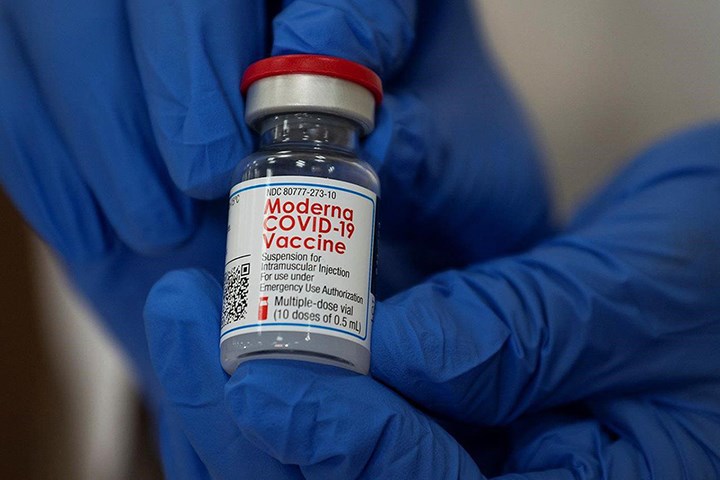The Moderna COVID-19 vaccine has begun to arrive in First Nations across the country as the pandemic’s second wave continues to batter many remote Indigenous communities.
In British Columbia, the Moderna vaccine arrived in 10 First Nations on Tuesday, communities that were chosen based on remoteness, need and the availability of health care staff, said Shannon McDonald, the deputy chief medical officer for the province’s First Nations Health Authority (FNHA).
Dr. McDonald declined to say which communities are getting the vaccine and how many doses are being offered.
“There’s certainly not enough vaccine available to satisfy all the requirements,” she said in an interview. “And then, just like everybody else, we wait for the next allotment.”
Tahltan Nation in northwestern B.C., however, announced on its Facebook page this week that it had received 600 Moderna doses from the FNHA. The Gitga’at Health Centre in Hartley Bay posted photos of its first vaccination clinic, held Wednesday, that included 95-year-old elder Helen Clifton, the first community member to be inoculated.
Provinces and territories have prioritized health care workers and long-term care facilities in the first phase of their vaccine programs, but Indigenous populations are also considered high-risk for COVID-19, particularly remote communities, because of inequities such as inadequate infrastructure and access to health care.
While almost 500,000 doses of the Pfizer-BioNTech vaccine have been delivered across the country since it was approved by Health Canada on Dec. 9, it cannot be easily transported to remote communities or stored because of its extreme refrigeration requirements.
The Moderna vaccine is not as fragile and can be stored at -20 C, making it more suitable for locations with limited resources.
On Wednesday, Manitoba announced it would be sending 5,300 of 7,300 Moderna doses expected to arrive this week to remote First Nations. The province has been hit hard and has seen disproportionate rates of COVID-19 cases and deaths among Indigenous people since September.
In a New Year’s Eve news release, Manitoba said that because of its higher proportion of Indigenous people, it will receive an additional 9,600 doses of the Moderna vaccine by the end of March and will fly them to priority locations. (The province said it also plans to get the Pfizer-BioNTech vaccine to remote communities reachable by ground from Thompson.)
It will be up to an appointed group of four First Nations health experts to determine which communities get the doses and who will be inoculated first.
Barry Lavallee, the appointed lead for Manitoba Keewatinowi Okimakanak, which represents a group of First Nations in northern Manitoba, said having a partnership with the province and a voice at the table for the vaccine rollout will benefit everyone in this “very historic work.”
Ontario received its first batch of the Moderna vaccine, about 53,000 doses, on Wednesday, and by Thursday afternoon more than half had already been administered.
John Guilfoyle, the public-health physician for the Sioux Lookout First Nations Health Authority, which is overseeing COVID-19 case management in 31 remote communities in Northwestern Ontario, said it will be early February before his area receives Moderna doses and that the James and Hudson Bay regions will get the vaccine first.
While no specific date or timeline has been given, the Weeneebayko Area Health Authority in Moose Factory announced Dec. 23 that it would be getting the vaccine soon and that elders and vulnerable and long-term care patients would be vaccinated first.
Dr. Guilfoyle said the plan is to vaccinate all adults, but achieving herd immunity will be difficult because as much as 40 per cent of the population in those communities is under 18 and the vaccine has not been approved for people under that age or pregnant women.
He said communities will be given priority based on factors such as their remoteness, infrastructure capacity, nursing staff and the co-ordination of local pandemic teams. He calls it an “absolutely major undertaking.”
“This is probably the biggest public-health intervention in the history of Canada,” he told The Globe and Mail.
The federal government said Tuesday that it received 168,000 Moderna doses in December and that they are being delivered this week to “designated vaccine delivery sites, including several northern, remote, and isolated communities.” This month’s allotment of 170,000 doses is expected to arrive by Jan. 11, said Major-General Dany Fortin, who is overseeing logistical planning for the vaccine rollout.



